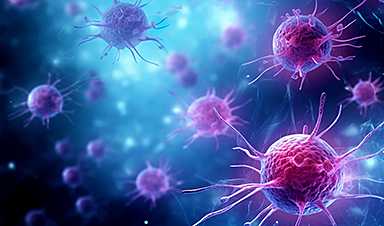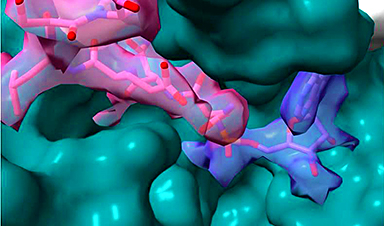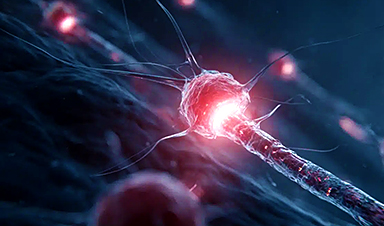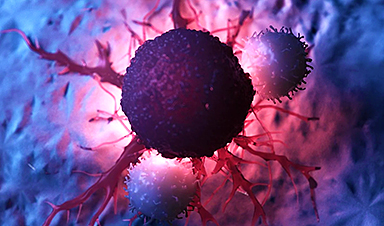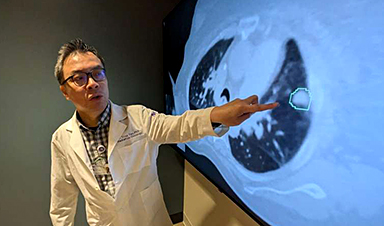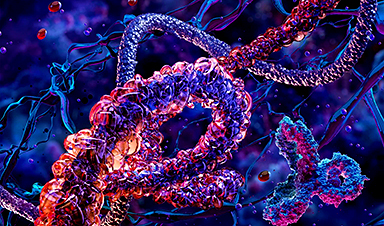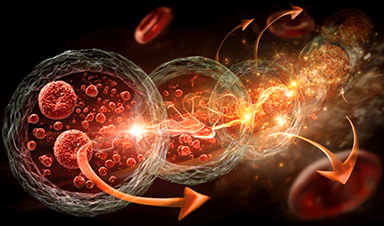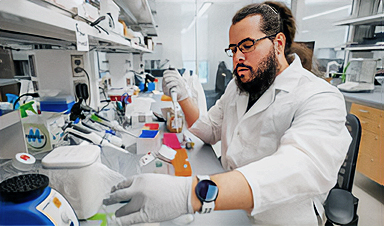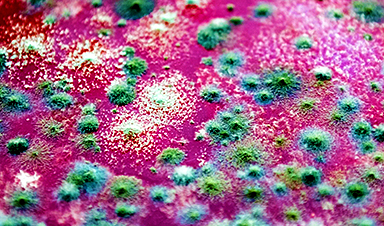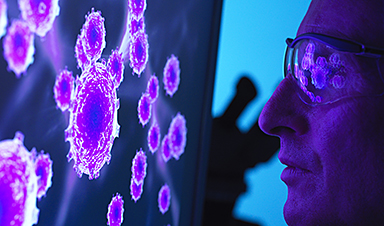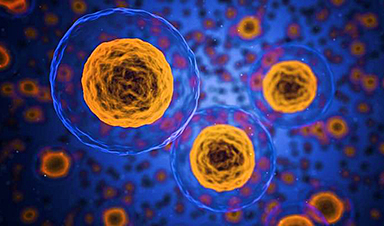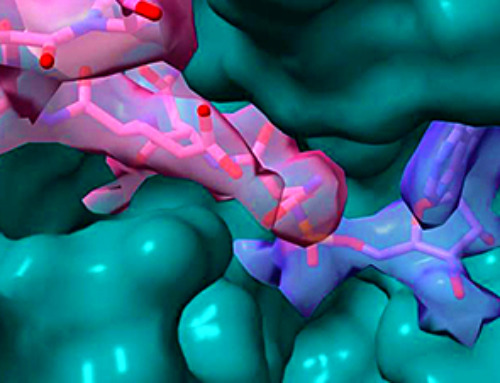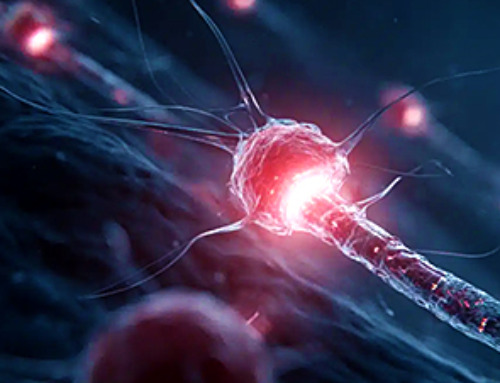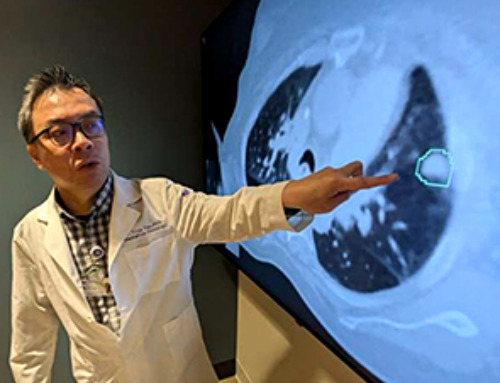Researchers discovered that ovarian tumors hinder T cells’ energy supply by trapping a key protein, blocking lipid uptake. A new approach to reprogram T cells could enhance immunotherapy for aggressive cancers.
Researchers at Weill Cornell Medicine have uncovered a mechanism by which ovarian tumors weaken immune cells, effectively blocking their energy source and hindering their ability to launch an attack. Published on October 23 in Nature, this discovery offers a potential new immunotherapy strategy for ovarian cancer, a notoriously aggressive and challenging disease to treat.
A significant obstacle in treating ovarian cancer is the tumor microenvironment—the complex ecosystem of cells, molecules and blood vessels that shields cancer cells from the immune system. Within this hostile environment, T cells lose their ability to take up the lipid (fat) molecules, which are necessary for energy to mount an effective attack.
“T cells rely on lipids as fuel, burning them in their mitochondria to power their fight against pathogens and tumors,” explained senior author, Dr. Juan Cubillos-Ruiz, The William J. Ledger, M.D., Distinguished Associate Professor of Infection and Immunology in Obstetrics and Gynecology at Weill Cornell Medicine. “However, the molecular mechanisms that govern this critical energy supply are still not well understood.”
Identifying How Tumors Block T-Cell Energy Supply
Lipids are abundant in ovarian tumors, but T cells seem unable to utilize them in this environment. “Researchers have focused on a protein called fatty acid-binding protein 5, or FABP5, which facilitates lipid uptake, but its exact location within the T cell remained unclear,” said Dr. Sung-Min Hwang, a postdoctoral associate in Dr. Cubillos-Ruiz’s lab who led the new study. Dr. Hwang discovered that in patient-derived tumor specimens and mouse models of ovarian cancer, FABP5 becomes trapped inside the cytoplasm of T cells instead of moving to the cell surface, where it would normally help take up lipids from the surroundings.

“That was the ‘aha!’ moment; since FABP5 is not getting to the surface, it couldn’t bring in the lipids necessary for energy production. But we still needed to figure out why,” said Dr. Cubillos-Ruiz, who is also co-leader of the Cancer Biology Program in the Sandra and Edward Meyer Cancer Center at Weill Cornell Medicine.
Working with collaborators, the researchers used a battery of biochemical assays to identify proteins that bind to FABP5. They found a protein called Transgelin 2 that interacts with FABP5 and helps move it to the cell surface.
Further experiments revealed that ovarian tumors suppress the production of Transgelin 2 in infiltrating T cells. Delving deeper, the researchers discovered that the transcription factor XBP1, which is activated by the stressful conditions within the tumor, represses the gene encoding Transgelin 2. Without Transgelin 2, FABP5 is trapped in the cytoplasm of T cells, preventing lipid uptake and rendering the T cells unable to attack the tumor.
Designer Immunotherapies to Overcome Tumor Defenses
With this fundamental mechanism worked out, the team explored an immunotherapy called chimeric antigen receptor T (CAR T) cells. This approach collects a patient’s T cells, engineers them to attack tumor cells and then injects the designer cells into the patient. “CAR T cells work well against hematological cancers like leukemia and lymphoma, but they’re really not effective for solid tumors like ovarian or pancreatic cancers,” Dr. Cubillos-Ruiz said.
When Dr. Hwang and his colleagues tested CAR T cells, which are currently being evaluated in clinical trials, in mouse models of metastatic ovarian cancer, they found the same problem—Transgelin 2 repression and impaired lipid uptake. Just like normal T cells in the tumor microenvironment, the engineered CAR T cells had FABP5 tangled in the cytoplasm. As a result, the CAR T cells were unable to access lipids for energy to effectively attack the tumor, highlighting a critical barrier in using this immunotherapy for solid tumors like ovarian cancer.
To solve the problem, the researchers inserted a modified Transgelin 2 gene that couldn’t be blocked by stress transcription factors, so expression of the critical protein was preserved. This allowed Transgelin 2 to chaperone FABP5 to the surface of the CAR T cells where it could take up lipids.
Indeed, the upgraded T cells were much more effective in attacking ovarian tumors than the original CAR T cells. “Our findings reveal a key mechanism of immune suppression in ovarian cancer and suggest new avenues to improve the efficacy of adoptive T cell immunotherapies in aggressive solid malignancies,” Dr. Cubillos-Ruiz said.
Reference: “Transgelin 2 guards T cell lipid metabolism and antitumour function” by Sung-Min Hwang, Deepika Awasthi, Jieun Jeong, Tito A. Sandoval, Chang-Suk Chae, Yusibeska Ramos, Chen Tan, Matías Marin Falco, Camilla Salvagno, Alexander Emmanuelli, Ian T. McBain, Bikash Mishra, Lionel B. Ivashkiv, Dmitriy Zamarin, Evelyn Cantillo, Eloise Chapman-Davis, Kevin Holcomb, Diana K. Morales, Xiaoqing Yu, Paulo C. Rodriguez, Jose R. Conejo-Garcia, Martin Kaczocha, Anna Vähärautio, Minkyung Song and Juan R. Cubillos-Ruiz, 23 October 2024, Nature.
DOI: 10.1038/s41586-024-08071-y
This work was supported in part by the National Institutes of Health grants R01 NS114653, CA271619, CA282072, R01 CA237154 and R01 CA269382, the U.S. Department of Defense grants W81XWH2010191, W81XWH-16-1-0438, W81XWH-22-OCRP-IIRA, W81XWH2110478 and W81XWH2110357, and the American Association for Cancer Research; AACR-Bristol Myers Squibb Immuno-Oncology Research Fellowship.
News
Team finds flawed data in recent study relevant to coronavirus antiviral development
The COVID pandemic illustrated how urgently we need antiviral medications capable of treating coronavirus infections. To aid this effort, researchers quickly homed in on part of SARS-CoV-2's molecular structure known as the NiRAN domain—an [...]
Drug-Coated Neural Implants Reduce Immune Rejection
Summary: A new study shows that coating neural prosthetic implants with the anti-inflammatory drug dexamethasone helps reduce the body’s immune response and scar tissue formation. This strategy enhances the long-term performance and stability of electrodes [...]
Scientists discover cancer-fighting bacteria that ‘soak up’ forever chemicals in the body
A family of healthy bacteria may help 'soak up' toxic forever chemicals in the body, warding off their cancerous effects. Forever chemicals, also known as PFAS (per- and polyfluoroalkyl substances), are toxic chemicals that [...]
Johns Hopkins Researchers Uncover a New Way To Kill Cancer Cells
A new study reveals that blocking ribosomal RNA production rewires cancer cell behavior and could help treat genetically unstable tumors. Researchers at the Johns Hopkins Kimmel Cancer Center and the Department of Radiation Oncology and Molecular [...]
AI matches doctors in mapping lung tumors for radiation therapy
In radiation therapy, precision can save lives. Oncologists must carefully map the size and location of a tumor before delivering high-dose radiation to destroy cancer cells while sparing healthy tissue. But this process, called [...]
Scientists Finally “See” Key Protein That Controls Inflammation
Researchers used advanced microscopy to uncover important protein structures. For the first time, two important protein structures in the human body are being visualized, thanks in part to cutting-edge technology at the University of [...]
AI tool detects 9 types of dementia from a single brain scan
Mayo Clinic researchers have developed a new artificial intelligence (AI) tool that helps clinicians identify brain activity patterns linked to nine types of dementia, including Alzheimer's disease, using a single, widely available scan—a transformative [...]
Is plastic packaging putting more than just food on your plate?
New research reveals that common food packaging and utensils can shed microscopic plastics into our food, prompting urgent calls for stricter testing and updated regulations to protect public health. Beyond microplastics: The analysis intentionally [...]
Aging Spreads Through the Bloodstream
Summary: New research reveals that aging isn’t just a local cellular process—it can spread throughout the body via the bloodstream. A redox-sensitive protein called ReHMGB1, secreted by senescent cells, was found to trigger aging features [...]
AI and nanomedicine find rare biomarkers for prostrate cancer and atherosclerosis
Imagine a stadium packed with 75,000 fans, all wearing green and white jerseys—except one person in a solid green shirt. Finding that person would be tough. That's how hard it is for scientists to [...]
Are Pesticides Breeding the Next Pandemic? Experts Warn of Fungal Superbugs
Fungicides used in agriculture have been linked to an increase in resistance to antifungal drugs in both humans and animals. Fungal infections are on the rise, and two UC Davis infectious disease experts, Dr. George Thompson [...]
Scientists Crack the 500-Million-Year-Old Code That Controls Your Immune System
A collaborative team from Penn Medicine and Penn Engineering has uncovered the mathematical principles behind a 500-million-year-old protein network that determines whether foreign materials are recognized as friend or foe. How does your body [...]
Team discovers how tiny parts of cells stay organized, new insights for blocking cancer growth
A team of international researchers led by scientists at City of Hope provides the most thorough account yet of an elusive target for cancer treatment. Published in Science Advances, the study suggests a complex signaling [...]
Nanomaterials in Ophthalmology: A Review
Eye diseases are becoming more common. In 2020, over 250 million people had mild vision problems, and 295 million experienced moderate to severe ocular conditions. In response, researchers are turning to nanotechnology and nanomaterials—tools that are transforming [...]
Natural Plant Extract Removes up to 90% of Microplastics From Water
Researchers found that natural polymers derived from okra and fenugreek are highly effective at removing microplastics from water. The same sticky substances that make okra slimy and give fenugreek its gel-like texture could help [...]
Instant coffee may damage your eyes, genetic study finds
A new genetic study shows that just one extra cup of instant coffee a day could significantly increase your risk of developing dry AMD, shedding fresh light on how our daily beverage choices may [...]
